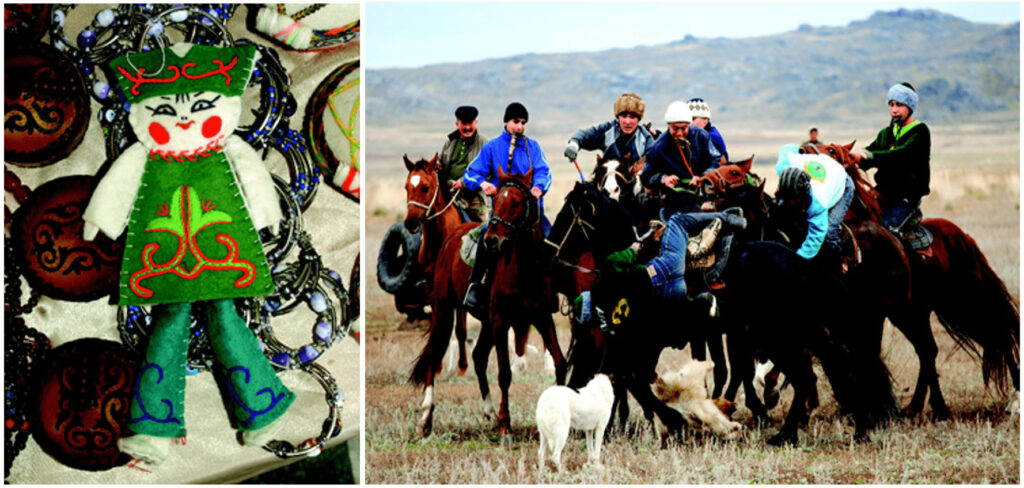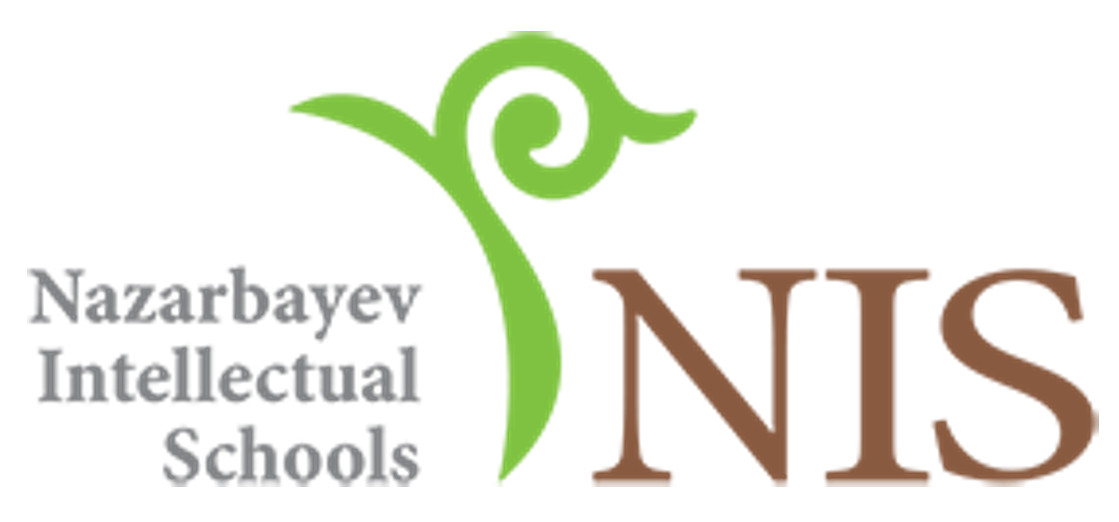|By Maryam Kurumbayeva, 11th Grade, Nazarbayev Intellectual School in Pavlodar|
The Silk Road was a great trade network that once connected Eurаsia and North Аfrica. The name is a reference to Chinese silk, transported via this route, which was extremely valuable and expensive. This trading road played a vital role not only in the economic development of the countries where the path passed through, but also in other spheres of people’s lives. After the appearance of modern means of transportation, the Silk Road fell into decay, hence the road stopped working. However, nowadays it has started functioning again under the name of the New Silk Road.
What will happen next? Let’s look at some possibilities below!
The Impact of the New Silk Road on Different Spheres of Life
Economics
Trade relations between countries and the transportation of goods will become stronger and easier, that is, facilitating exports and imports. This will bring great benefits to the economies of all countries on the Silk Road, which are included in the route – that means to Kazakhstan as well. At the moment, Kazakhstan is a member of many international organizations, such as the WTO (World Trade Organization), the CIS (Commonwealth of Independent States) and the SCO (Shanghai Cooperation Organisation), the main goal of which is to maintain stable growth in the economies of participating countries. These organisations make a huge contribution to the development of the Kazakh economy. The New Silk Road will further help improve relations between countries and make it possible to transport goods with even greater benefit for Kazakhstan. After all, Kazakhstan is a key figure in the New Silk Road, linking China and Europe.
A report by PwC Kazakhstan in 2017, “Kazakhstan and the New Silk Road”, suggests the weight and cost of goods transported between the EU (European Union) and China rose every year between 2014 and 2016; in 2014 about 43.3 million tons were transported from the EU to China, then in 2016, the data showed this had increased to 49.6 million tons. This is a significant difference, and we can understand that many of these products will be transported through Kazakhstan, which gives great economic benefits as some amount of money will be paid for the transportation of goods through the country. Also some of the goods will also remain in Kazakhstan. And last but not least, the goods of Kazakhstan production will be able to enter the market of European countries and China. Therefore, the export and import of goods into and through Kazakhstan will significantly contribute to the economy of Kazakhstan and support the country’s development.
Politics
The Silk Roаd has development vectors that cаn bring new opportunities to the development of the economic situation, culture, and political relations of the countries. This article, part of the 2019 Annual Meeting of the World Economic Forum in Davos that I found through Gale In Context: Global Issues, maintains that globalisation had already manifested in the first century BC, when goods from Chinа, mostly silk, began to appear in Europe. Thus, the trading route established political relations between countries.
“When Chinese e-commerce giant Alibaba in 2018 announced it had chosen the ancient city of Xi’an as the site for its new regional headquarters, the symbolic value wasn’t lost on the company: it had brought globalization to its ancient birthplace, the start of the old Silk Road. It named its new offices aptly: “Silk Road Headquarters”. The city where globalization had started more than 2,000 years ago would also have a stake in globalization’s future.”
Peter Vanham, “A brief history of globalization” (2019)

“Kazakh President Kassym-Jomart Tokayev remotely addresses the 76th Session of the U.N. General Assembly in New York City on Wednesday, September 22, 2021”. UPI Photo Collection, 2021. Gale In Context: Global Issues https://link.gale.com/apps/doc/GHKYNX503742207/GIC?u=nispavlo&sid=bookmark-GIC&xid=27051a25
Culture
The article “Silk Roаd” found in Gale In Context: World History says that “accompanying the silk trade was the slow but cumulative diffusion of the craft of silk-making, which travelled from China through Central Asia, Persia, Anatolia, North Africa, Eastern and Southern Europe, and finally, in the seventeenth and eighteenth centuries, took hold in the newly discovered American continent”. Thus it can be concluded that, with the help of the Silk Road, crafts can also find a new life or spread around the world.
Furthermore, it is worth taking into account that during the time of the original Silk Road, cultural exchange among the nationalities living near the route was a part of life. They exchanged experiences, learned new crafts, new languages and more. All of this will give the ethnic population of Kazakhstan an opportunity to share their experience with other cultures, as the country is currently struggling with the preservation of cultural identity. In turn, this opportunity will help to strengthen the national cohesion of the country, as well as spread some Kazakh traditions and culture around the world.
The article “The marginocentric cultural features of cities along the Great Silk Road in the territory of Kazakhstan” that I found in Gale Literature Resource Center states that “nomads, among them especially the Turkic tribes, Indo-Iranian (or proto-Indo-Europeans), and the Arabs, developed many products, techniques and ideas still used in everyday life by the global community”. From this, it can be understood that the Silk Road, over several historical periods, facilitated contact between different peoples and allowed cultural characteristics to penetrate each other. There is a possibility that in the future the new Silk Road will provide an opportunity to spread the culture of the Kazakhs.

Right: “Riders on horseback participate in a traditional game in which the players seek to carry a dead goat…” Junior Worldmark Encyclopedia of World Cultures, edited by Timothy L. Gall and Susan Bevan Gall, 2nd ed., vol. 5, UXL, 2012. Gale In Context: Global Issues https://link.gale.com/apps/doc/PC1931487667/GIC?u=nispavlo&sid=bookmark-GIC&xid=f4a54fab
Tourism
The Silk Road has always aroused great interest among people, so opening and reconstruction will help develop tourism in Kazakhstan. Tourism will not only strengthen the status of the country all around the world, but also help to maintain stable economic progress, which is a great opportunity for the country. In this interview with Yevgeny Nikitinsky, the chairman of the Industry and Tourism Committee of the Ministry of Tourism and Sports, Nikitinsky said that, the project to restore the Great Silk Road will help develop the tourism industry in Kazakhstan and, according to the ministry’s estimates, an annual influx of a million tourists is expected in the republic as a result. Thereby making it clear that the Great Silk Road project will be of great benefit to Kazakhstan. He added: “We plan to work with domestic tour operators Turan Asia, Zhibek Zholy and the world-famous travel company Marco Polo”. This, in turn, suggests that the project will give development to the country’s tour operators.

A Promising Project
The resumption of the Great Silk Road will have an impact or is already having an impact on all spheres of life. Its resumption means not only a positive impact on the economy and opening new doors for Kazakhstan to reach its full potential but also the return and flourishing of a great historical and cultural heritage. That is why it is worth paying attention to this promising project.
If you enjoyed reading about the New Silk Road, you might like:
- Early Twentieth-Century Explorers in Inland Asia
- The George Macartney Mission to China, 1792–1794
- Rediscovering China and the World in the Nineteenth Century
- George Macartney, Kashgar and the Great Game
- Cultural Appropriation or Swiftian Satire? Gilbert and Sullivan’s The Mikado
- “There is no other remedy”: The Argument for Free Trade in the First Issue of The Economist
- Tourism and Technology within The International Herald Tribune Historical Archive
Blog post cover image citation: Illustration of what is believed to be the Polo family crossing the desert with a camel caravan from a 1375 atlas. “Camel Caravan along the Silk Road.” Gale World History Online Collection, Gale, 2007. Gale In Context: World History https://link.gale.com/apps/doc/BT2380001349/WHIC?u=nispavlo&sid=bookmark-WHIC&xid=04e17775


 In Spring 2022, Gale ran a competition with Nazarbayev Intellectual Schools, Kazakhstan, which gave students at schools within the group the chance to research and write about a topic of interest – with the two top entries published on The Gale Review! Below is the winning entry, a superb piece by 11th grade student Maryam Kurumbayeva.
In Spring 2022, Gale ran a competition with Nazarbayev Intellectual Schools, Kazakhstan, which gave students at schools within the group the chance to research and write about a topic of interest – with the two top entries published on The Gale Review! Below is the winning entry, a superb piece by 11th grade student Maryam Kurumbayeva.
 The schools within the Nazarbayev Intellectual Schools group have access to the
The schools within the Nazarbayev Intellectual Schools group have access to the